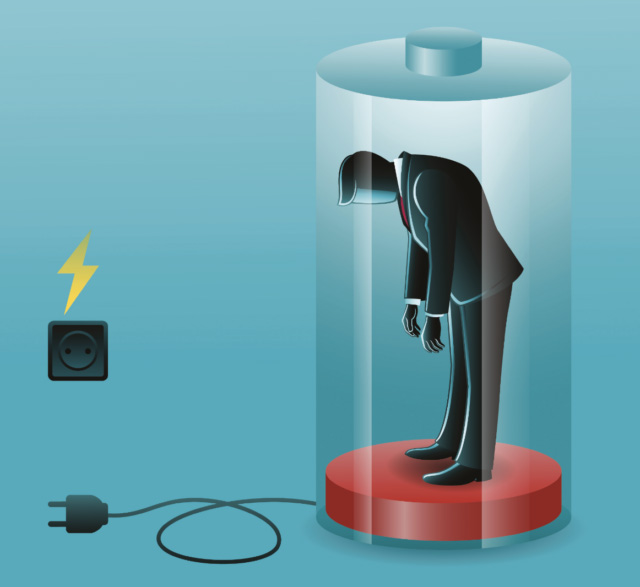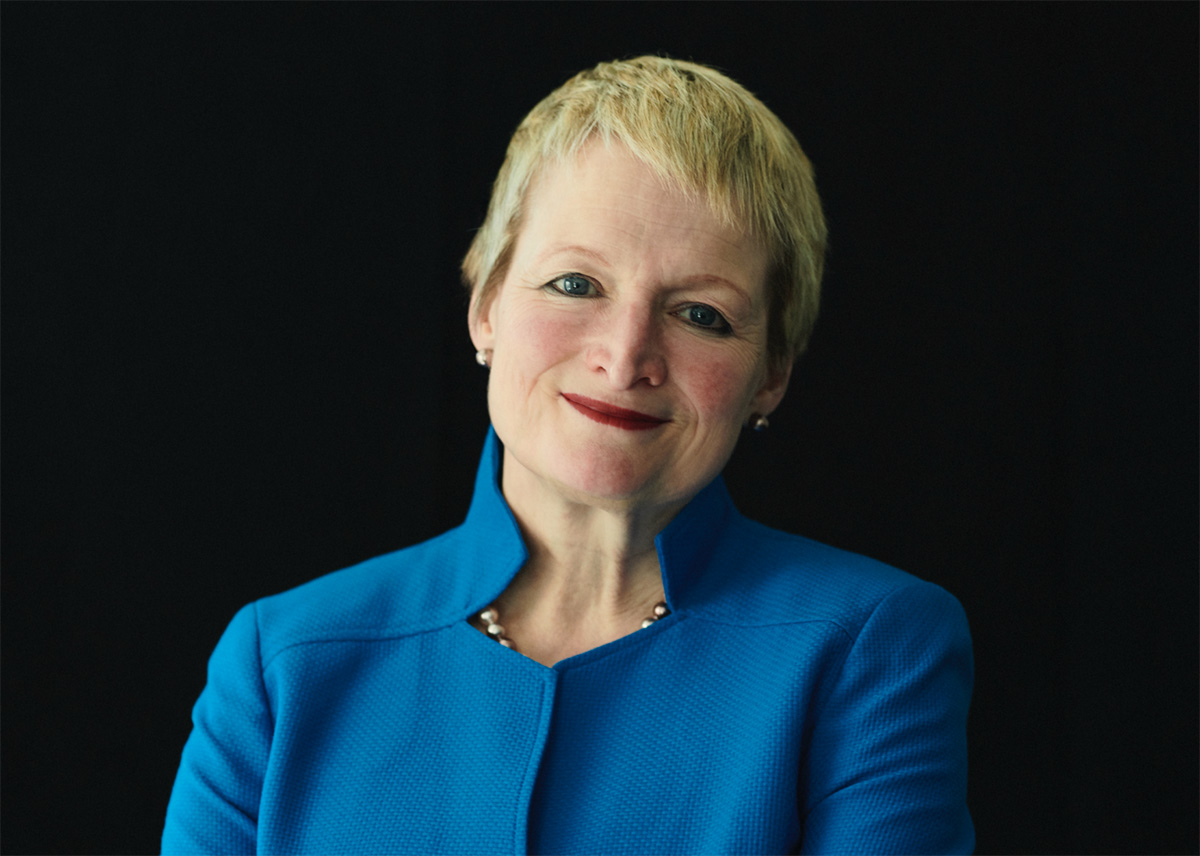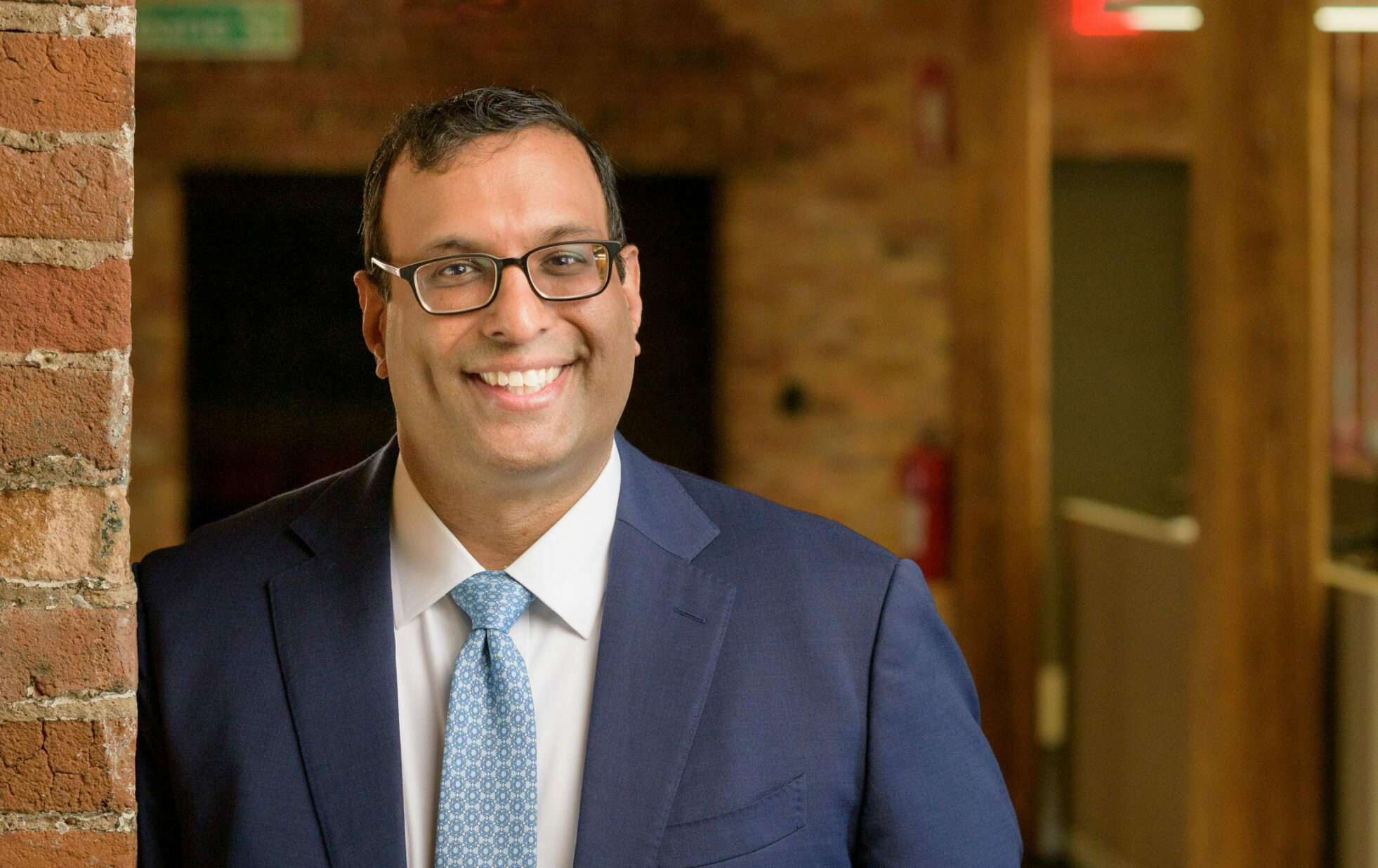Overwork and overwhelm have become ordinary. Leaders’ behaviours can create stress and contribute to burnout – or reshape workplace cultures to promote wellbeing and personal sustainability.
Burnout is one of the buzzwords of our times. Reports of chronic stress and burnout appear in the press every day, with people describing themselves working longer hours, facing higher workloads, and dealing with more demands at work and at home than they have ever known before. It seems that the pandemic has been a catalyst for a collective awakening when it comes to reassessing our relationship with work. Many leaders have realized that burnout is an issue, for their organizations, and for themselves as individuals – but few seem to know how to deal with it.
Burnout is a prolonged response to work-related stress which manifests in three ways: exhaustion, cynicism and ineffectiveness. Exhaustion relates to experiences of chronic stress over time. Cynicism involves becoming cold, detached and sceptical about our job or workplace; we experience ourselves as robotic and lose the human element when dealing with customers and colleagues, and even in our relationships at home. Ineffectiveness tends to manifest as a crisis of confidence, negative self-talk, and a sense of reduced personal accomplishment.
In their seminal work, Christina Maslach, Wilmar Schaufeli and Michael Leiter suggest that it is only when we experience all three states simultaneously that we are classed as burned out. It has been argued that burnout is too often used as a synonym for ‘tired,’ and that we are not in fact living through a burnout epidemic so much as a case of overdiagnosis. Yet as some of Maslach and Leiter’s most recent research has found, all three qualities of burnout are on the rise among the working population: according to a 2021 survey, more than 50% of workers in the US feel burned out. Many workers are experiencing feelings of being overextended, ineffective and disengaged. Over half of the working population may not yet be burnt out, but they are on the way. And leaders have a pivotal influence on whether they teeter over the edge – or can shift bank from the brink.
Leaders’ impact – for better or worse
Leaders play a critical role in setting the cultural tone with regard to overwhelm and burnout. Unfortunately, overwork has become a way of life in many organizations. In our experience, organizational cultures tend to see exhaustion as a status symbol and badge of honour, so employees are implicitly rewarded for operating from this state. Yet there is also often stigma and shame attached to burnout, so people do not speak up when they are struggling, assuming that colleagues will think they are ‘weak’ and ‘not up to the job’.
Against that backdrop, leaders have enormous influence. They can help prevent burnout by building deep and trusting relationships with those around them, so that conversations about overwhelm can be surfaced without fear of judgement or reprisal. On the other hand, they can also promote burnout, through destructive leadership behaviours, such as blaming others, breaking promises and expressing anger.
Moreover, it is not just overtly negative leadership behaviours that drain energy, cause stress and contribute to burnout. Studies show that passive-avoidant leadership can be equally destructive. These behaviours include turning a blind eye to dysfunctional or damaging behaviours in organizations, regularly being unavailable or absent, and avoiding difficult conversations.
Leaders’ impact – for better or worse
Consider Malcolm’s story, as told by his line manager:
“Malcolm was working for me when he broke. I still don’t really get it. He was a machine, you know, in a good way. Anything that came his way he would tackle full on and obtain incredible results. He worked tirelessly. I guess there were some signs, like one day he yelled at one of his team when there were other people, including me, within earshot. I mean, I do that sometimes – we have an assertive culture here – but it was unlike Malcolm.
That same week, I heard he lost his cool with a manager too, at a hotel we’d hired for our leadership summit. He was really stressed about the noise and construction going on during the CEO’s speech. We were supposed to record the speech and then use it in a company-wide comms campaign. I guess they couldn’t edit out background noise and the CEO’s office had made it clear that the conditions needed to be absolutely perfect or they would not allow the video to be used. I think Malcolm stayed up several nights in a row leading up to the event. I told him, “Buddy, you should get some rest,” but I knew he wouldn’t let anything drop for the sake of a few hours of sleep. And I was confident that in his hands everything would go smoothly. I mean, there wasn’t much the rest of us could do to help. He had it all in his head, and his team was good.
It was a two-hour drive home from the summit. Everything had gone perfectly. The CEO’s office was really happy and congratulated me. Malcolm seemed happy too, although he was quiet. He looked like he was forcing himself to smile when the MC thanked him and his team at the end. He was driving the van because it was rented in his name and at one point I looked over and saw that he was crying while he was driving. I thought maybe the late afternoon sun was bothering him, but he didn’t say anything and I didn’t want to make it worse. I guess all the tension must have got to him.
After we stopped for a break, one of his team members took over the driving and he seemed OK. It was the following week that he finally hit a wall and couldn’t come to work. Our HR business partner called me to say he was on medical leave and would be out for two weeks. Two weeks! That was like a whole summer holiday. I didn’t think it would take him that long to rest up and there was plenty of follow-up to be done from the summit, but he really did disappear. They took him to a special clinic and I hear he slept for most of the two weeks. He wasn’t even allowed to check his email and stay in touch. I thought it must have been driving him crazy to be so cut off after being the nerve centre for the whole thing, but apparently he needed it and they had just moved home. His career was on the rise, but he couldn’t have had much time for himself or his family. Maybe that’s what got him in the end.
If I’m honest, I need people like Malcolm on my team – people who really care and are able to push things to a new level. I need to oversee things and manage the politics, but the people on the ground, like Malcolm, have to be able to work at two levels. They need the intellectual power of a top leader and the drive of a front-line worker. I think Malcolm’s drive was too strong in the end. He was effective while it lasted, but he pushed himself too far.“
It illustrates how crucial our relationships at work are for spotting signs of overwhelm, which we know is a dashboard warning light on the road to burnout. When we are in overwhelm, our bodies speak to us through physical, mental and emotional pain. However, as is so often the case, Malcolm perceived that the demands of his job as a senior leader outweighed any compassion that he owed to himself, so his warning signs went unchecked.
Why is this so important? Because people who experience burnout almost always say they did not see it coming. Only with hindsight do they realize that all the signs were there; that they somehow ignored or suppressed them. Their inner voice was louder about the need to keep pushing on than when it was saying, “Slow down, take it easy, take care of yourself.”
So, what did you feel for Malcolm as you read the vignette? What do you think about his boss? Can you identify with their behaviours? Are we becoming numb to our drive to overwork, or to the tendency for overwork in those around us? In Malcolm’s case, it appeared to be passive-avoidant behaviours that contributed to his burnout, with his boss appearing to encourage a culture of overwork. Leaders should ask themselves:
- How might I be complicit in a culture of overwork?
- To what extent do I turn a blind eye when it comes to unhealthy behaviours?
- How do I personally role model in this regard?
We acknowledge that this is a challenge, as leaders themselves often feel heightened pressure to perform. But the reprioritization of human connection, communication and care are the first steps towards creating a better work environment, for leaders and their teams alike.
A healthy work life
We do not suggest that responsibility for creating a better work environment lies solely with individual leaders or the organization. To eradicate burnout, individuals, organizations, families and communities all need to play their part in moving us beyond self-interest and toward reciprocity and collective action, to create sustainable future workplaces for the benefit of all. To truly tackle burnout, not only do we need to challenge societal norms and expectations concerning work as the source of our fulfilment in life, we also need to pay attention to the organizational environments we find ourselves caught up in.
From the stories we gathered as part of our research, it is those people who act with tough compassion that are able to save their souls.
Tough compassion
Tough compassion means being able to spot and surface our own unhealthy behaviours – and those displayed by others – before it is too late. It means facing up to difficult conversations about the detrimental impact of organizations’ work cultures, and it means living with clearer boundaries between work and non-work, in service of our long-term wellbeing.
If we are to make the changes required to tackle burnout at its roots, we must also demand different working conditions. Employees and employers need to co-create a shared vision of what it means to lead a healthy work life, and of how work fits into a life well lived.
To eradicate burnout, organizations need to be radically reimagined so that compassion for self and for others is prioritized – so that collective wellbeing is as much a priority as profit. Leaders must role model healthy behaviours by making personal sustainability one of their guiding leadership strengths; and we all, as individuals, must find ways of affirming that purpose also comes from life outside of work.
Dr Amy Bradley is a professor of leadership and management and author of The Human Moment. Dr Katherine Semler is a senior partner at Korn Ferry and adjunct faculty at Ashridge Hult. They are jointly authors of Running on Empty: Navigating the Dangers of Burnout at Work (LID Publishing)



